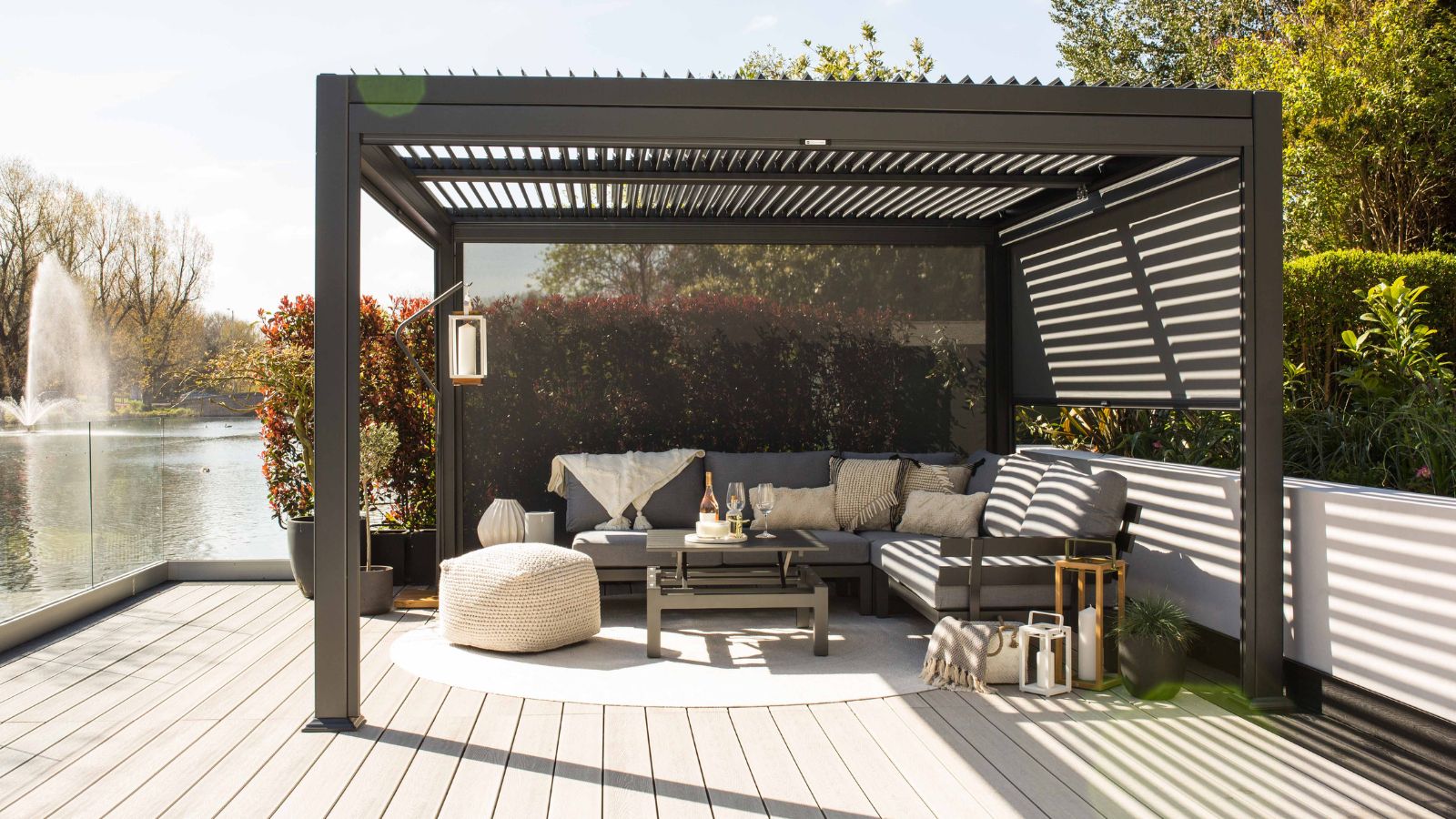Kitchen radiator ideas: Heating the heart of your home in style
After brilliant kitchen radiator ideas? Look no further — our collection offers inspiration that is designed to be both beautiful and practical
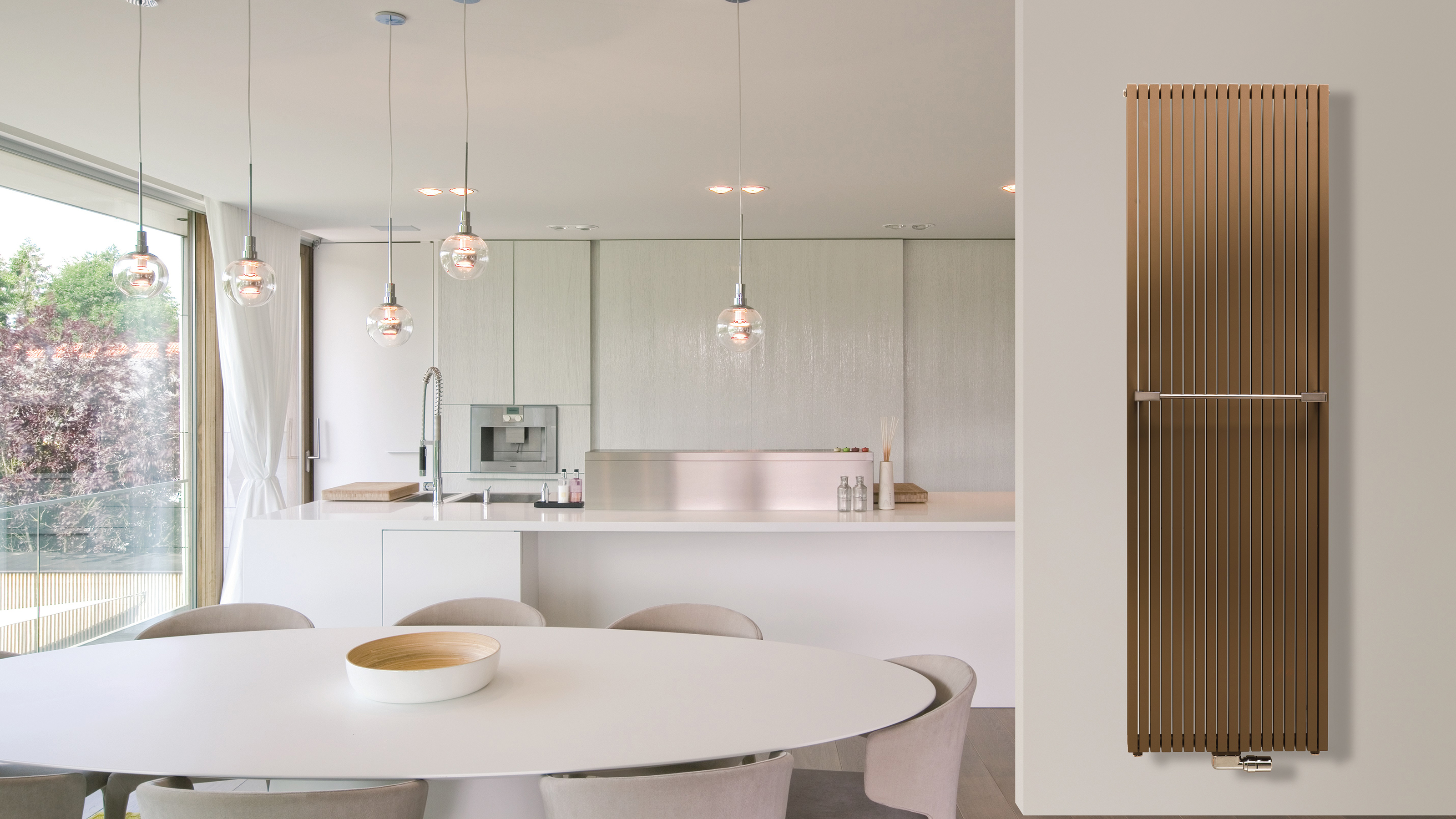
Your kitchen radiator ideas should be something at the forefront of your mind when coming up with a new kitchen design scheme — they need not only to provide an effective way of heating the space, but also have to fit in with the overall style of the room.
There are many different types of radiator you can choose for a kitchen, but some are better suited to this room than others. The kitchen is, after all, a room with a lot of demands that other areas of the house don't have.
While many people do opt for underfloor heating in the kitchen – and this is a great option – do bear in mind that providing somewhere to hang damp tea towels can be really handy. Many modern radiators are designed specifically for kitchens, and come complete with hooks and rails for this very purpose.
Our selection of ideas covers everything from designs created to make a strong style statement, to those that will blend in seamlessly.
Tailoring your kitchen radiator ideas
It is important to bear in mind that heating a kitchen can be quite different to heating other rooms in your house. Kitchens can often get quite hot without the heating being on when ovens and hobs are being used, along with other appliances such as dishwashers.
It is always necessary to calculate the correct heating requirements of a room before settling on a size and style of radiator in order to ensure it will give off the right amount of heat for the space, but in the kitchen it is particularly important to ensure the room doesn't overheat.
For this reason, speak to your supplier about what the BTU (British thermal units) requirements of your room will be, or use an online BTU calculator to work out the size of radiator that is going to be most suitable.
Your radiator choice will also need to be based on the design of the space — standard radiators are not always the best option in a room where walls are often taken up by units or seating. For this reason, many kitchen radiators come in shapes and designs that are based on tackling the issue of awkward spaces.
1. Allow your kitchen design to shine
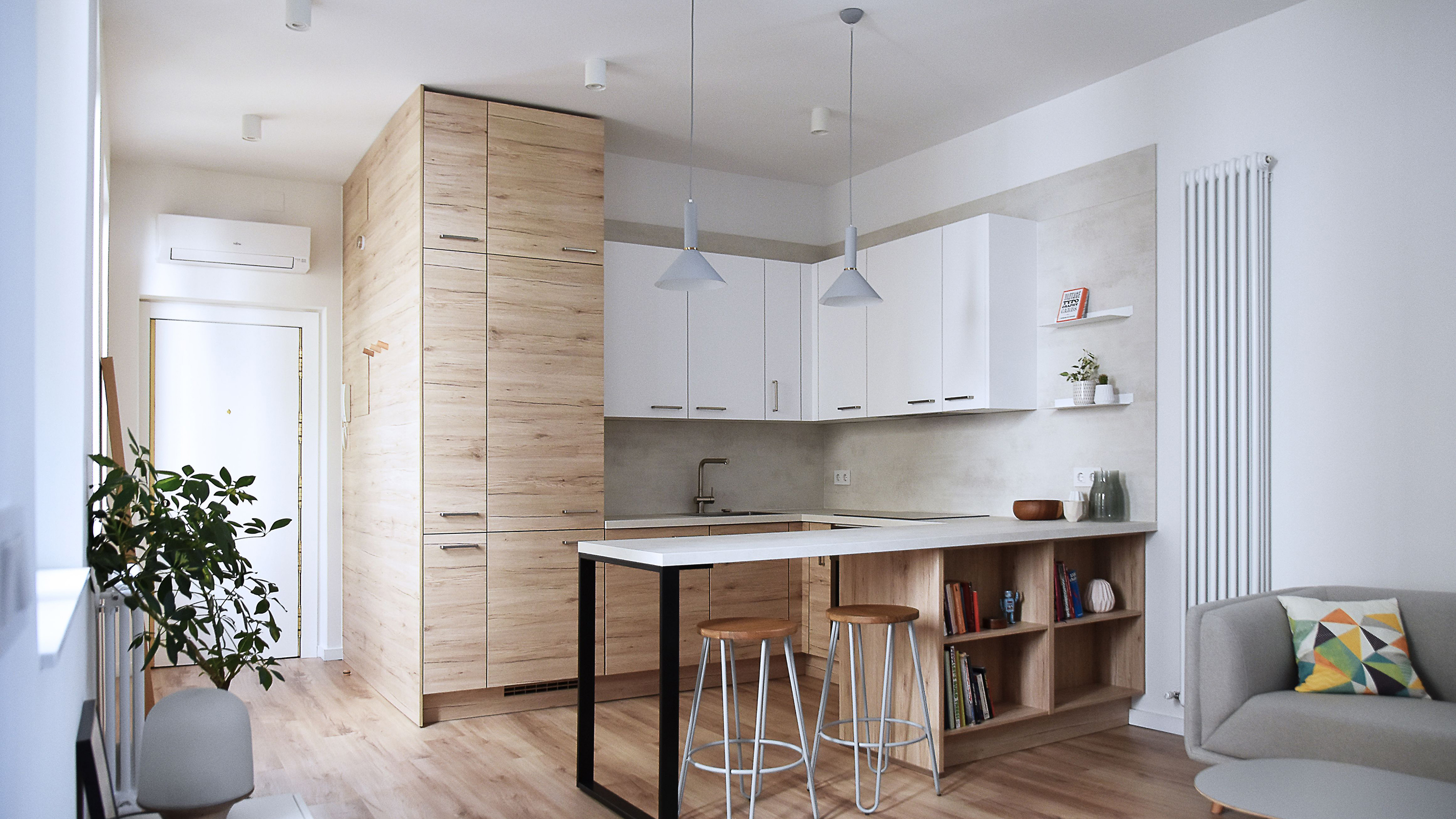
If you are keen to ensure your kitchen radiator doesn't draw attention away from your carefully planned-out kitchen design, then opt for a style that is subtle in both its form as well as in colour.
White is an obvious choice, while slimline, tall, narrow radiators make sense both visually as well as from a practical perspective, slotting in between units and items of furniture and requiring little in the way of floor and wall space.
The Ancona from The Radiator Company, shown here, comes in a vast range of sizes and column options and can be both vertically and horizontally mounted.
2. Give tea towels a place to dry out
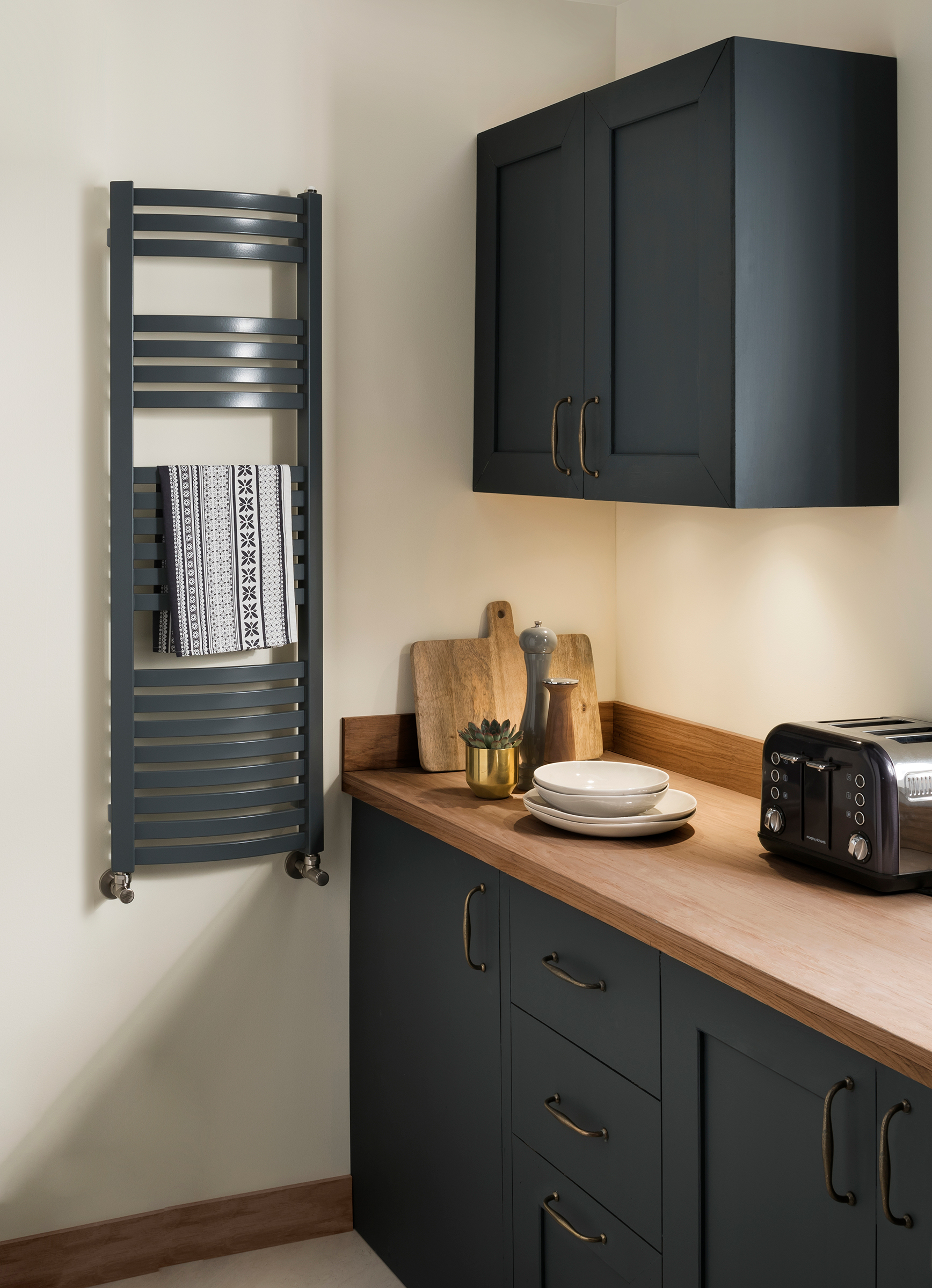
Practicality should be a priority in the kitchen — and your choice of radiator can help here. As well as keeping the room warm and cosy, it makes sense to pick a design that is built to hold and dry out damp hand and tea towels, aprons and oven gloves.
Here, the Griffin from The Radiator Company, in a smart matt grey finish, offers plenty of hanging space as well as looking super sleek and stylish. Better still, it comes in 15 different sizes.
3. Opt for a wooden finish for warmth
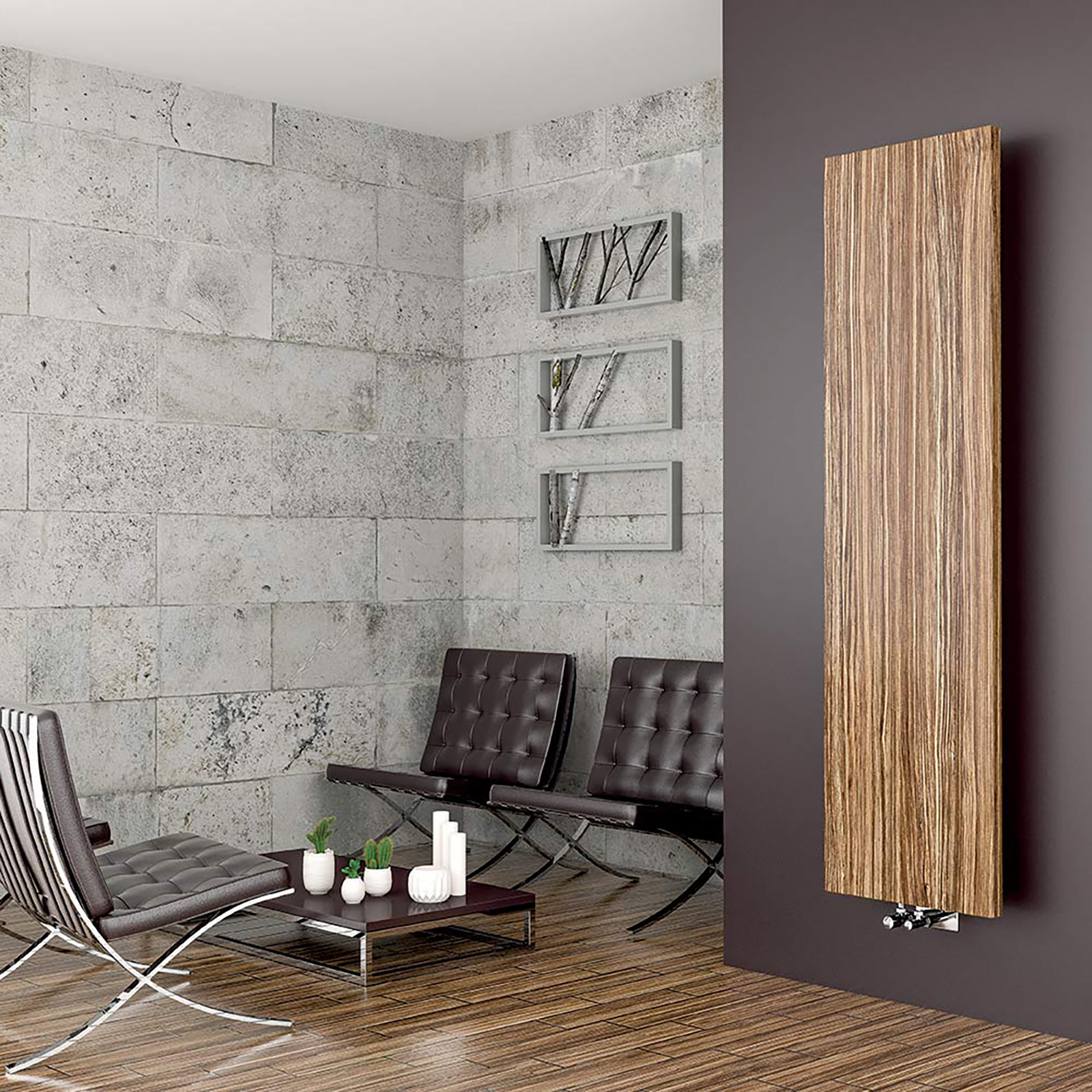
Wooden finishes offer a warm and charm that is hard to match — but you may not have considered wood as a radiator material. The Tulipi from Viadurini is a hydraulic designer radiator with a real wood surface concealing the steel skeleton beneath.
Turning your radiator into a talking point by opting for wood is a great idea — plus wood works with all kinds of kitchen styles, so is a great option for those after modern kitchen ideas as well as those who might be set on a more classic look, such as a Shaker design.
4. Go for classic style with a column radiator
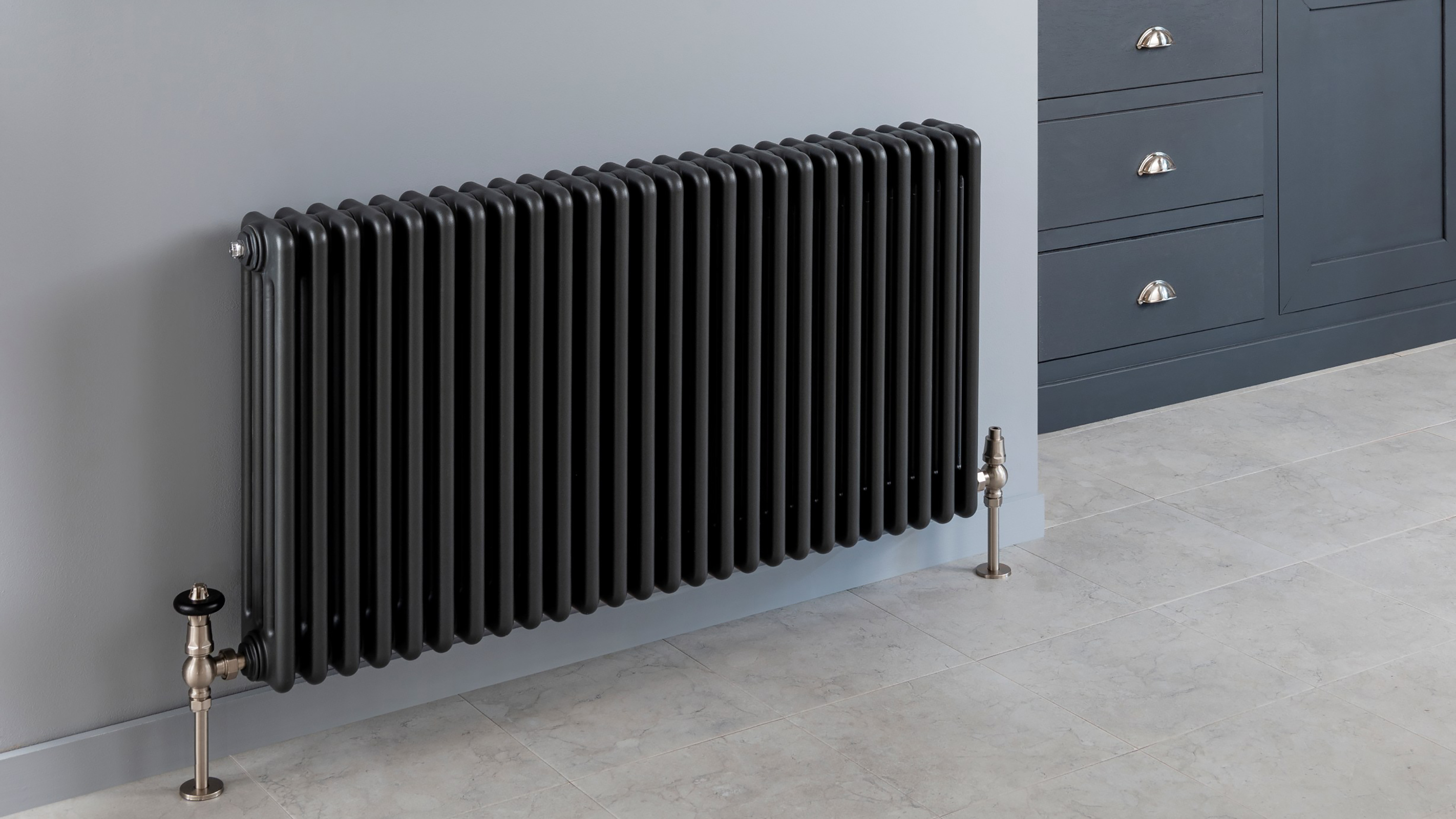
Column radiators have timeless appeal and are now available in all kind of configurations, finishes and sizes to suit all interior design schemes.
If you have opted for a more classic kitchen style, such as a Shaker kitchen or farmhouse, a chunky column radiator will suit it down to the ground. Here, the Stock Anocona, from The Radiator Company, in Graphex, sits beautifully alongside the smoky blue Shaker kitchen.
5. Save space with a vertical design
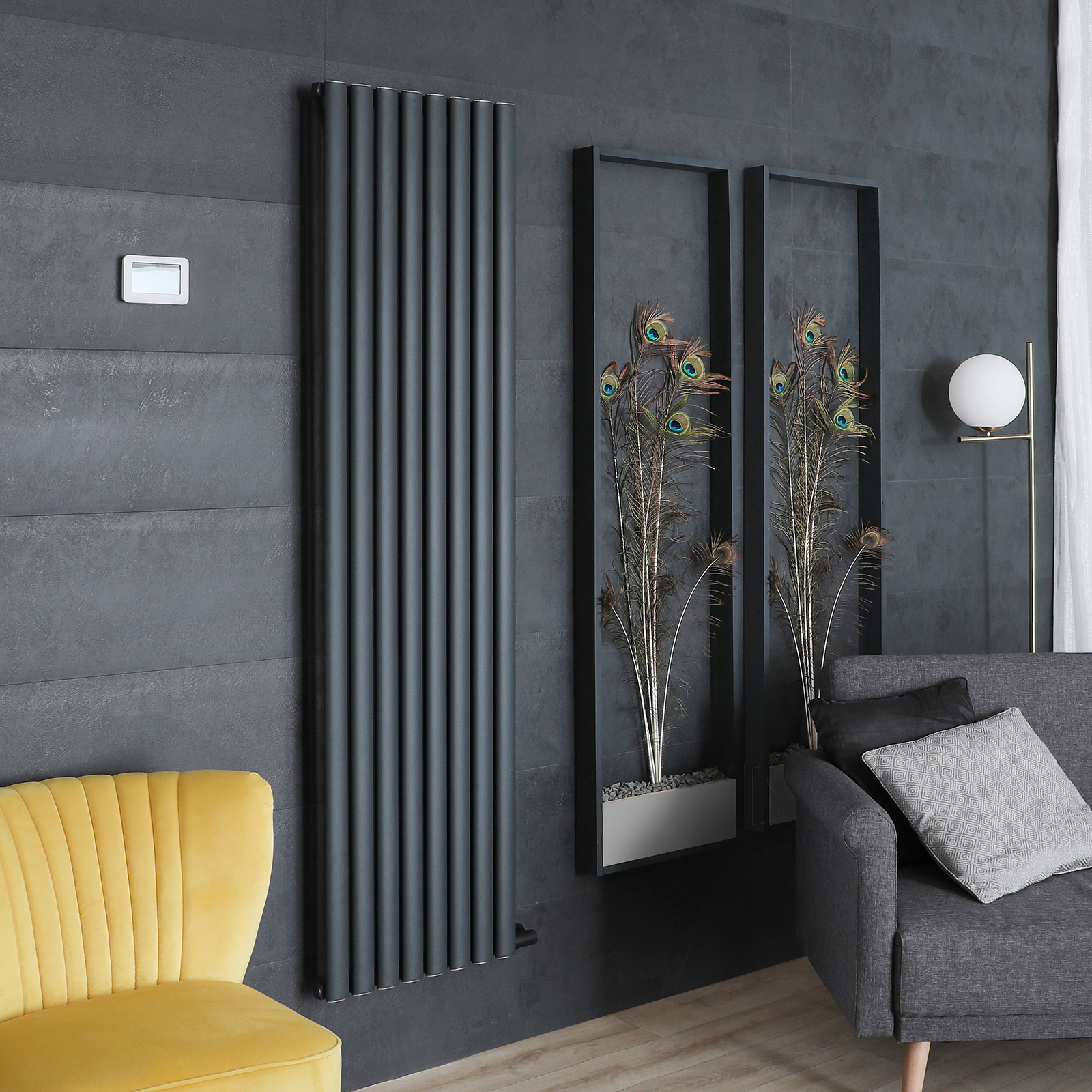
Vertical radiators make perfect sense in kitchens where wall space is often largely given over to kitchen units and worktops. Their tall, narrow design slots easily into awkward spots that might otherwise be wasted — plus they are now available in some really eye-catching designs. They are a great option for those looking for galley kitchen ideas too.
The Milano Aruba Ardus Anthracite Dry Heat Vertical Electric Designer Radiator, from BestHeating, is simple to use and made from lightweight aluminium.
6. Match your radiator to your walls
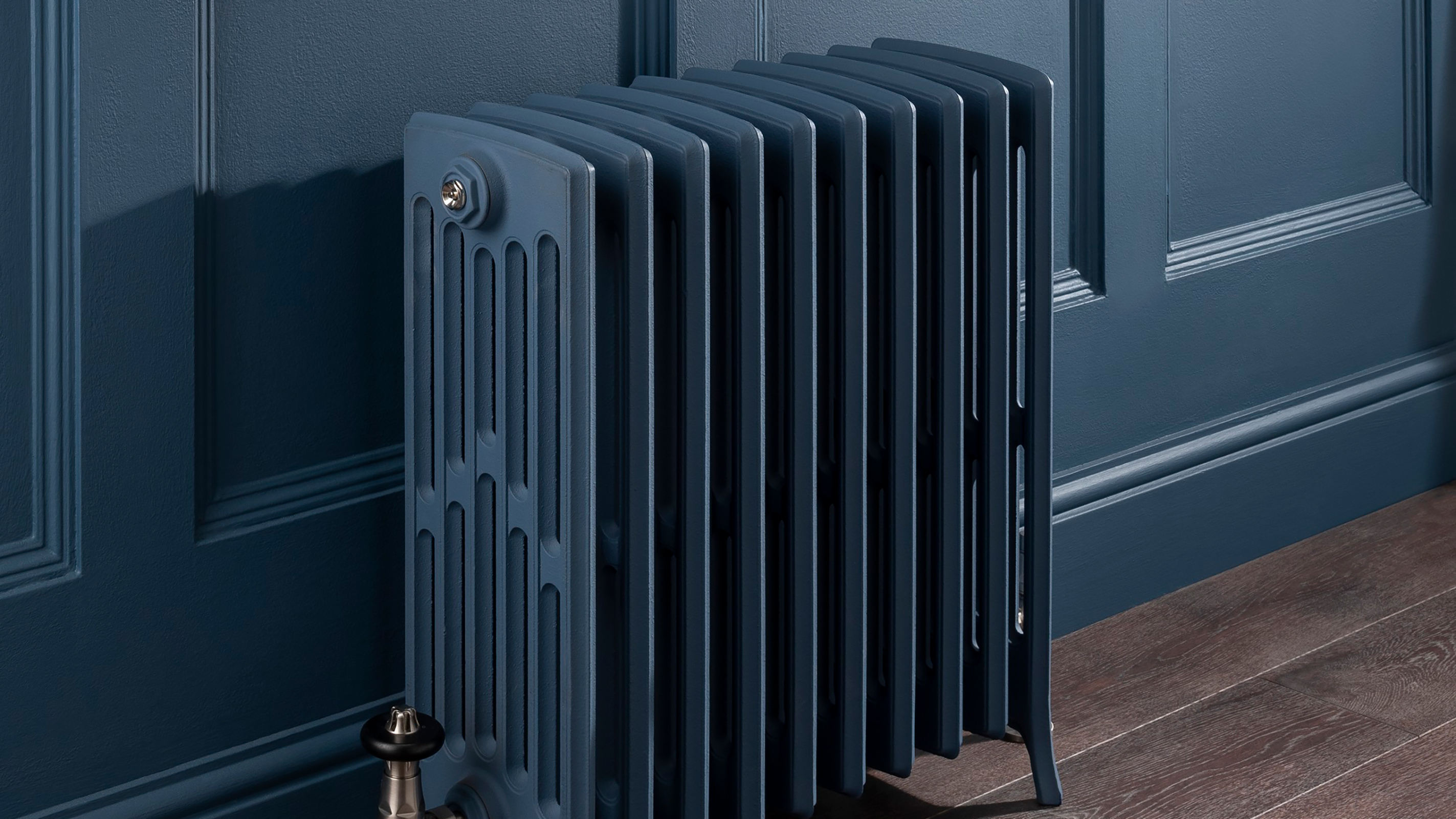
To ensure your new radiator blends in seamlessly with the rest of your kitchen design scheme, consider opting for a model in a colour that matches your walls — a nifty trick that can also make a space appear bigger.
If you can't find a design in a colour to suit, you could always familiarise yourself with how to paint a radiator before selecting a shade that will work.
Here, the The Radiator Company's Ledbury cast iron radiator has been colour coordinated with the walls which are painted in Benjamin Moore's Van Deusen Blue.
7. Take a twist on the traditional column design
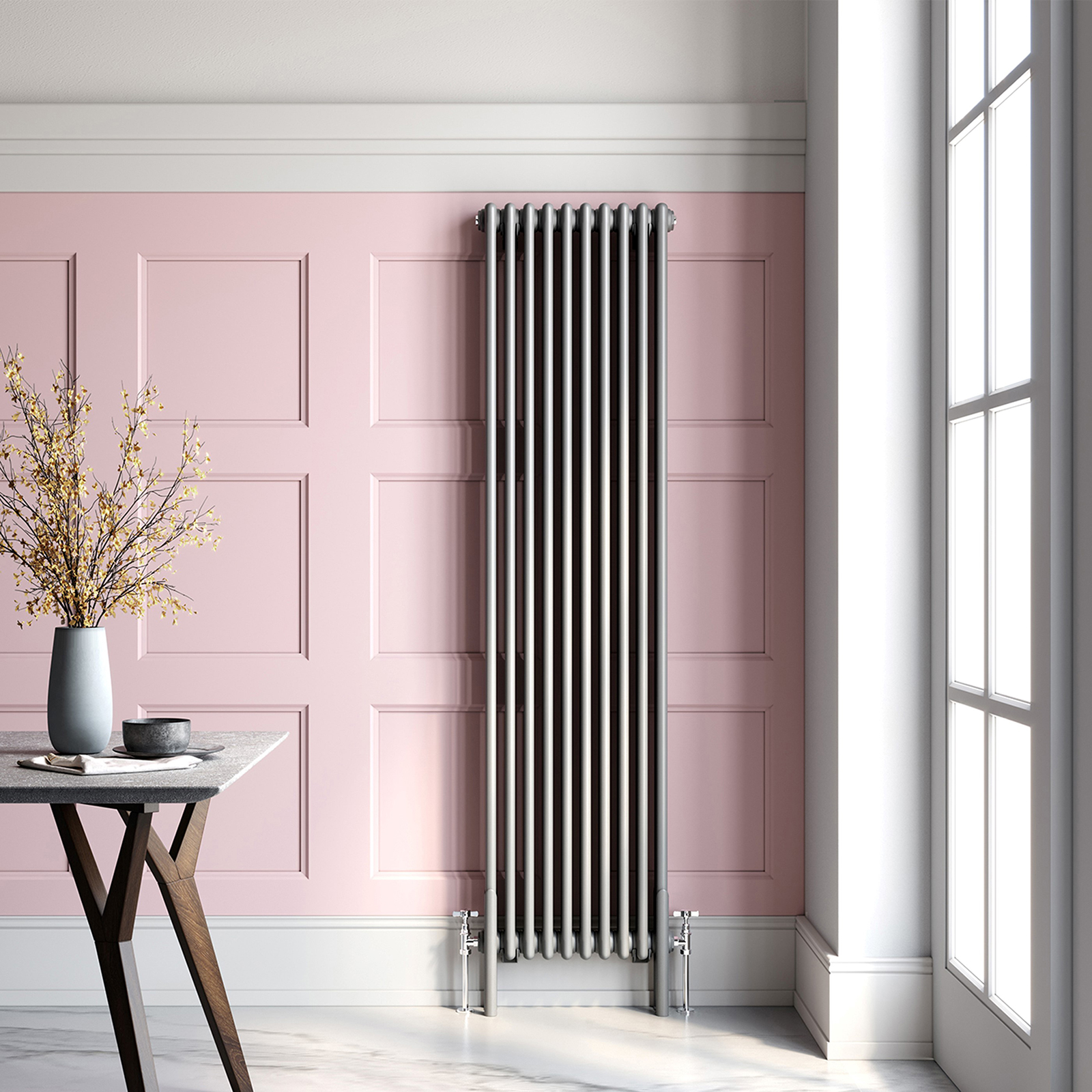
There is no reason why a column radiator needs to be traditional in its design — as the Athens Triple Column Radiator, shown here in Dove Grey, from Bathroom Mountain proves.
While the reassuringly chunky appearance of column radiators is beautiful, it is not always practical in a room such as the kitchen, where every inch of space counts. For this reason, vertical column radiators make a lot of sense — plus they can really enhance a high ceiling.
8. Combine heating with seating
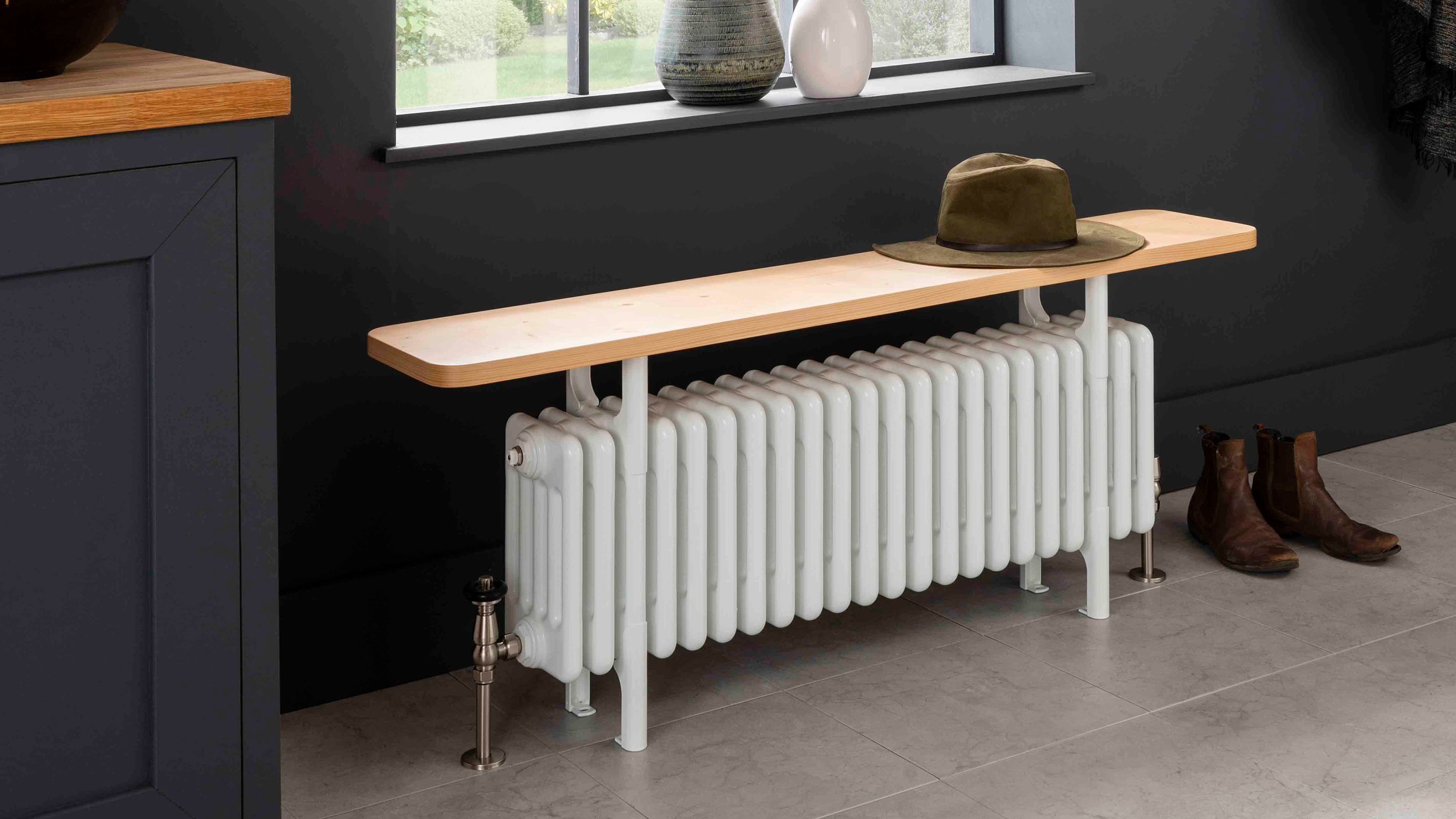
Consider installing a radiator bench in the kitchen to provide a snug spot to hunker down when the temperature drops. Positioning a radiator bench under a window is a nice idea, allowing you to view the chilly outdoors from a warm seat — but this is an idea that could work anywhere in the kitchen layout.
The Ancona Bench Seat from The Radiator Company features a subtle pale wooden bench above a sturdy column-style radiator and would also work well in utility rooms or boot rooms, as well being one to bear in mind if you are coming up with a new hallway design.
9. Use your radiator for accent lighting
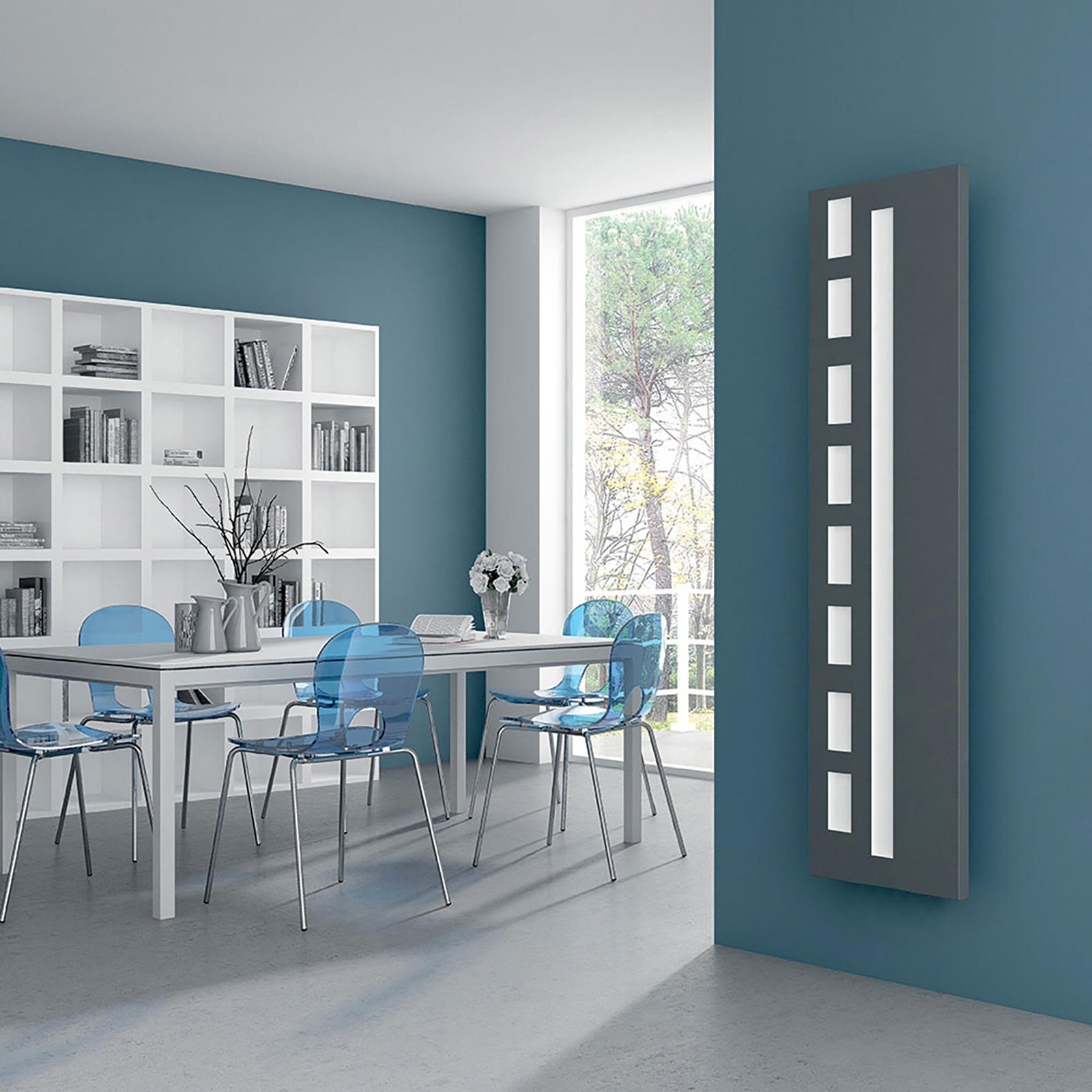
Had you considered combining your kitchen lighting ideas with your plans for your kitchen heating? If not, then perhaps this next tip might be a good starting point.
Radiators now come in all shapes and sizes and there are even models out there featuring illumination — such as this, the Crocco electric radiator from Viadurini which can be customised with a chromotherapy set with remote-controlled speed and brightness. This radiator is perfect once the sun goes down and you want to conjure up a cosy, warm ambience.
10. Give towels a place to hang
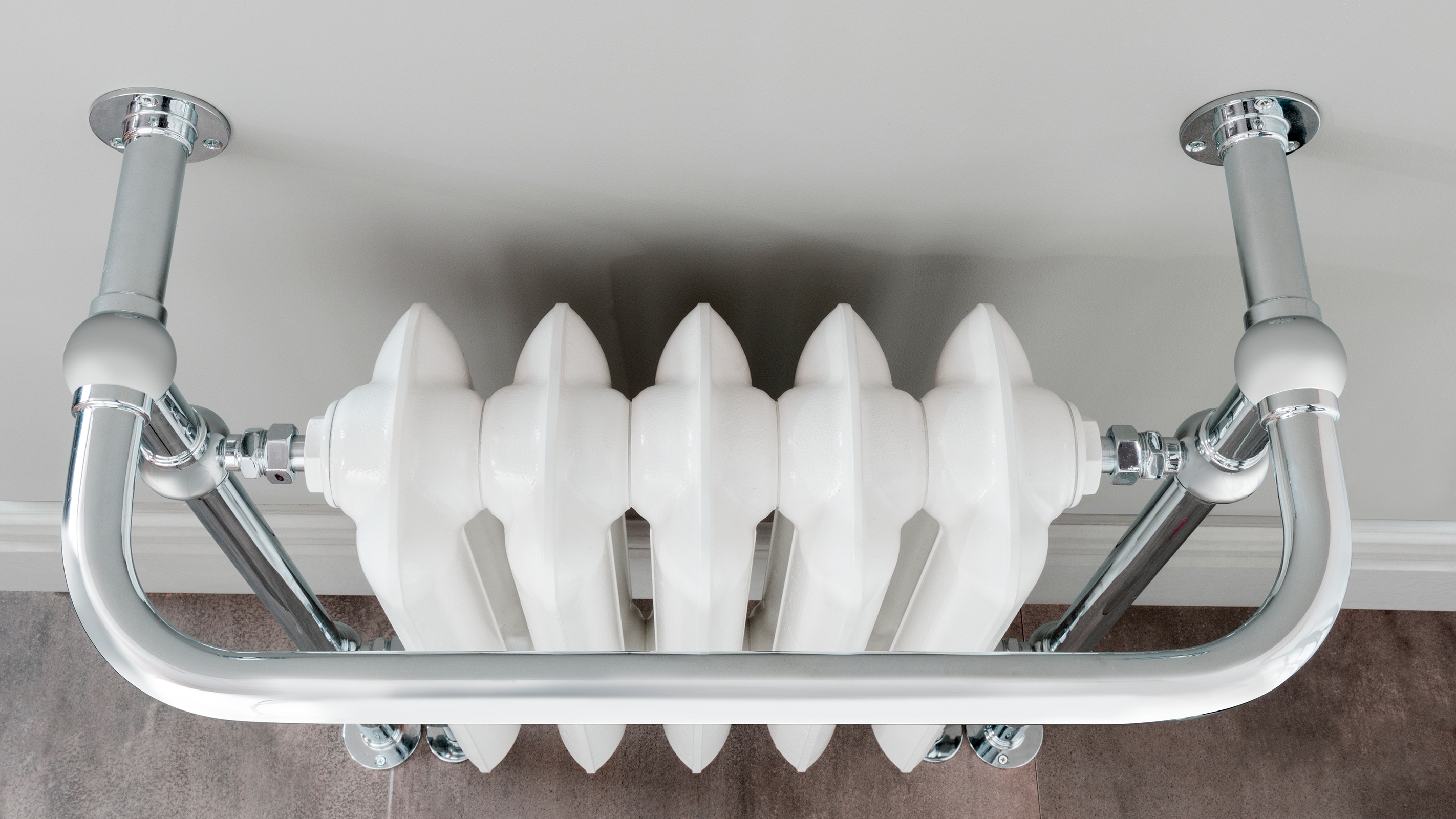
Very often these days, kitchen radiators and towel warmers are almost interchangeable. Although bathroom radiators tend to be bigger and feature more hanging space to accommodate bath sheets and the like, the principle reamins the same.
The Linton Towel Rail from The Radiator Company would be ideal for those after small kitchen ideas, offering vintage style in sizes as compact as 490mm in width.
11. Reflect light with a mirrored finish
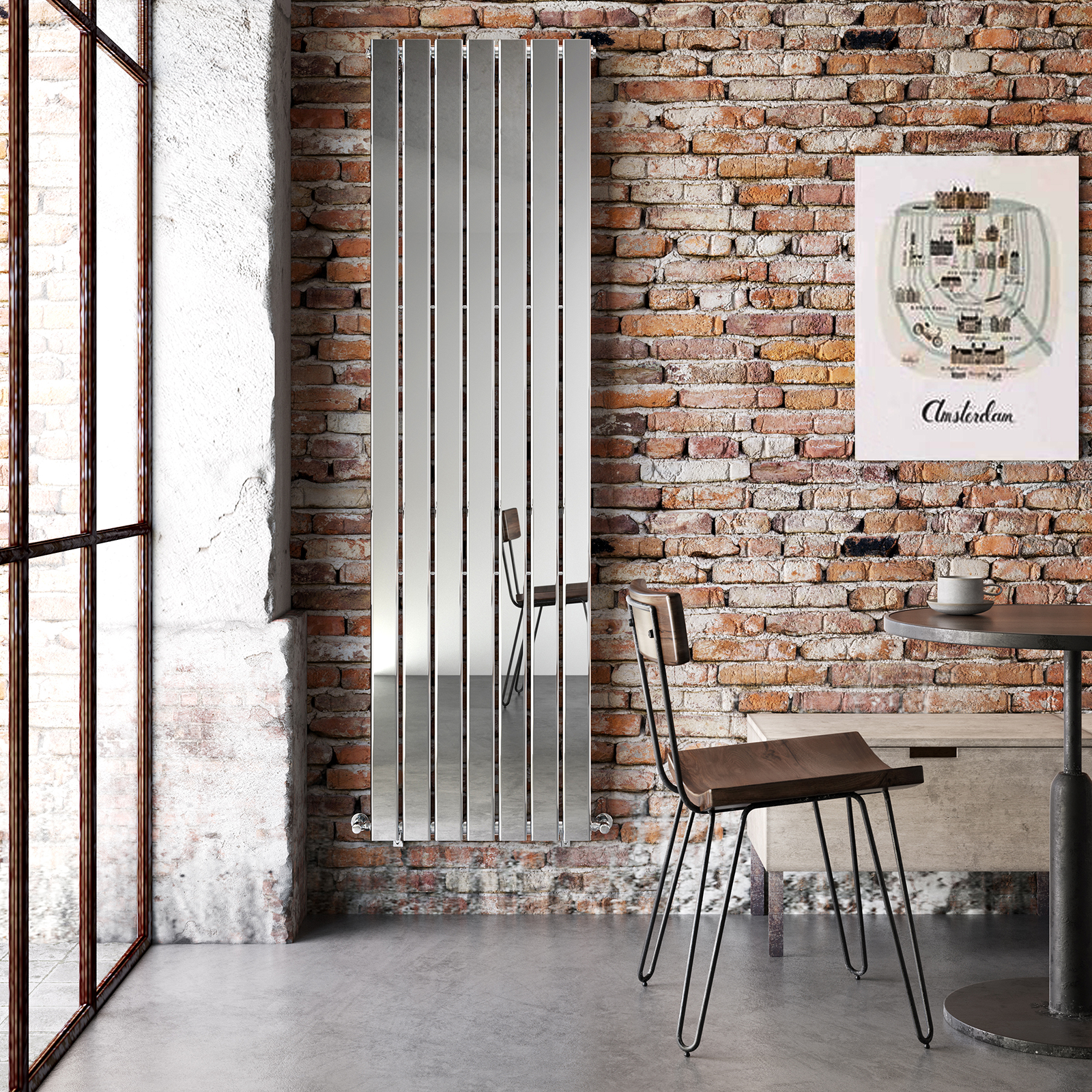
Mirrors can be used in a multitude of ways in order to make small spaces feel bigger than they really are. Placing mirrors near windows really maximises the natural light already coming in, not to mention the views, while using full-height mirrors can create a strong design statement.
If you don't have space for a large mirror as well as a radiator then consider combining the two instead. The Faro Chrome Single Flat Panel Vertical Radiator from Bathroom Mountain is super reflective.
Get the Homebuilding & Renovating Newsletter
Bring your dream home to life with expert advice, how to guides and design inspiration. Sign up for our newsletter and get two free tickets to a Homebuilding & Renovating Show near you.
Natasha was Homebuilding & Renovating’s Associate Content Editor and was a member of the Homebuilding team for over two decades. In her role on Homebuilding & Renovating she imparted her knowledge on a wide range of renovation topics, from window condensation to renovating bathrooms, to removing walls and adding an extension. She continues to write for Homebuilding on these topics, and more. An experienced journalist and renovation expert, she also writes for a number of other homes titles, including Homes & Gardens and Ideal Homes. Over the years Natasha has renovated and carried out a side extension to a Victorian terrace. She is currently living in the rural Edwardian cottage she renovated and extended on a largely DIY basis, living on site for the duration of the project.

